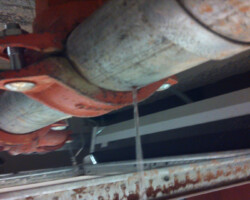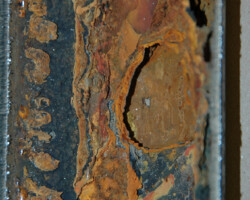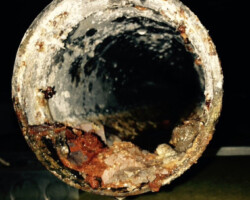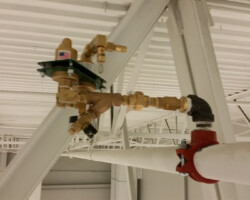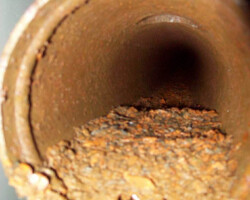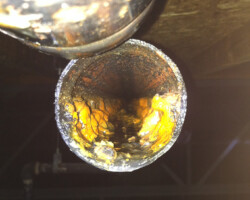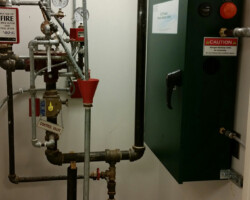Safety Measures to Avoid Fire in Factories and Warehouses
The Importance of Fire Extinguisher Inspections and Maintenance
November 11, 2024The Benefits of Regular Fire Safety Inspections
November 18, 2024Are you aware that massive fires break out every year, causing millions of dollars in damage and endangering countless lives? It serves as a stark reminder of the importance of implementing effective safety measures to avoid fire incidents in factories and warehouses. While the consequences of such incidents can be devastating, there are practical steps that can be taken to mitigate the risk. From conducting fire risk assessments to ensuring proper storage and handling of hazardous materials, this discussion will explore various safety measures that can help protect lives, property, and businesses. Stay tuned to discover the key strategies that can be implemented to minimize the risk of fire in these high-risk environments.
Fire Risk Assessment
Assess the fire risks in your factory or warehouse with a thorough and comprehensive fire risk assessment. Conducting a fire risk assessment is vital to identify potential hazards and implement effective fire prevention strategies. This assessment involves evaluating the layout, equipment, and materials present in your facility to determine the likelihood of a fire occurrence and the potential consequences.
To conduct a fire risk assessment, start by identifying potential ignition sources such as electrical equipment, heating systems, or flammable substances. Evaluate the adequacy of fire safety protocols, including the availability and functionality of fire extinguishers, sprinkler systems, and emergency exits. Consider factors such as the storage and handling of hazardous materials, as well as the presence of any potential fire barriers or fire-resistant construction materials.
During the assessment, it is essential to involve employees and provide training on fire safety protocols and evacuation procedures. Regularly review and update the assessment to account for any changes in the facility’s layout, equipment, or materials. Additionally, consider consulting with fire safety professionals to ensure the accuracy and effectiveness of your assessment.
Proper Storage and Handling of Hazardous Materials
Ensure the proper storage and handling of hazardous materials to minimize the risk of fire incidents in your factory or warehouse. To achieve this, follow these guidelines:
- Proper labeling: Clearly label all containers of hazardous materials with their contents and any relevant safety information. This ensures that everyone in the facility can easily identify the substances and understand the associated risks. Proper labeling also helps prevent accidental mixing of incompatible materials, which can lead to chemical reactions and fires.
- Storage considerations: Store hazardous materials in designated areas that are well-ventilated, fire-resistant, and away from sources of ignition. Separate incompatible substances to prevent reactions. Keep aisles clear and provide sufficient space between storage units to allow for emergency access and firefighting. Additionally, ensure that flammable liquids are stored in approved safety cabinets or rooms equipped with appropriate ventilation and fire suppression systems.
- Emergency response procedures: Develop and communicate clear emergency response procedures for handling hazardous materials. Ensure that all employees are trained in these procedures and know how to safely handle, store, and dispose of hazardous materials. Regularly review and update these procedures to incorporate any changes in regulations or best practices.
Regular Maintenance and Inspection of Equipment
Regular maintenance and inspection of equipment is crucial to ensuring fire safety in factories and warehouses. Implementing preventive measures through regular equipment maintenance can help identify potential fire hazards and reduce the risk of fire incidents.
To maintain fire safety, it is essential to establish a comprehensive maintenance program. This program should include routine inspections, testing, and servicing of all equipment used in the facility. Regular inspections should be performed to identify any signs of wear and tear, damage, or malfunction that could lead to a fire.
During maintenance inspections, it is important to check the condition of electrical systems, such as wiring, switches, and circuit breakers. Any frayed wires, loose connections, or faulty components should be promptly repaired or replaced. In addition, inspecting and cleaning heating and ventilation systems regularly can prevent the buildup of dust, debris, or flammable materials that could ignite and cause a fire.
Furthermore, maintaining commercial fire protection services in Seattle equipment, such as fire extinguishers, sprinkler systems, and fire alarms, is vital. Regular inspections should be conducted to ensure that these systems are in proper working condition and ready to respond effectively in case of a fire emergency.
Employee Training and Fire Drills
To maximize fire safety in factories and warehouses, it is crucial to train employees and conduct regular fire drills. This ensures that everyone is well-prepared to handle an emergency situation and can respond quickly and effectively. Here are three key reasons why employee training and fire drills are essential:
- Emergency evacuation procedures: During training sessions, employees learn the proper emergency evacuation procedures specific to their workplace. They are taught how to quickly and safely exit the building, where the designated assembly points are located, and how to account for all personnel. This knowledge is vital in ensuring a smooth and orderly evacuation in the event of a fire.
- Fire suppression techniques: Employee training includes instruction on basic fire suppression techniques, such as the proper use of fire extinguishers and fire blankets. By familiarizing themselves with these techniques, employees can take immediate action to extinguish small fires before they spread and become uncontrollable. This can significantly reduce the risk of property damage and injuries.
- Effective response to emergencies: Fire drills allow employees to practice their response to a fire emergency in a controlled environment. They learn how to remain calm, follow evacuation procedures, and communicate effectively with others. By repeatedly participating in fire drills, employees become more confident and capable of responding to real-life emergencies with speed and efficiency.
Installation and Maintenance of Fire Safety Systems
When installing and maintaining fire safety systems in factories and warehouses, it is important to prioritize regular inspections and testing to ensure optimal functionality. Fire safety system installation involves strategically placing fire alarms, smoke detectors, fire extinguishers, and sprinkler systems throughout the facility. These systems should be installed following local fire codes and regulations. It is crucial to work with professionals who have expertise in fire safety system installation to ensure that all components are properly connected and functioning correctly.
Once the fire safety systems are installed, regular maintenance is necessary to keep them in good working condition. Fire safety system maintenance involves conducting routine inspections and testing to identify any potential issues or malfunctions. This includes checking the batteries in smoke detectors, testing the functionality of fire alarms and sprinkler systems, and inspecting fire extinguishers for any signs of damage or expiration.
Regular maintenance of fire safety systems ensures that they are ready to respond effectively in the event of a fire. It helps identify and rectify any problems that may compromise their functionality, such as faulty wiring or blocked sprinkler heads. By prioritizing the installation and maintenance of fire safety systems, factories, and warehouses can greatly reduce the risk of fire-related incidents and protect the lives of their employees and the integrity of their assets.
Frequently Asked Questions
What are the consequences of not properly storing and handling hazardous materials?
If you don’t properly store and handle hazardous materials, the consequences can be severe. Improper storage can lead to leaks, spills, and chemical reactions, increasing the risk of fires. Following prevention measures is crucial to avoid such incidents.
How often should equipment in factories and warehouses be inspected for fire hazards?
You should inspect equipment in factories and warehouses for fire hazards regularly to ensure fire prevention measures are in place. The frequency of inspection depends on the specific requirements and regulations of your industry.
What topics should be covered in employee training sessions regarding fire safety?
When it comes to employee training sessions on fire safety, it’s essential to cover topics like employee participation in fire prevention, understanding emergency evacuation procedures, and the importance of following safety protocols.
How often should fire drills be conducted in factories and warehouses?
Fire drills should be conducted regularly in factories and warehouses to ensure the safety of employees. The frequency depends on factors like the size of the facility and the number of employees. Evacuation plans are crucial for a swift and orderly response in case of a fire.


